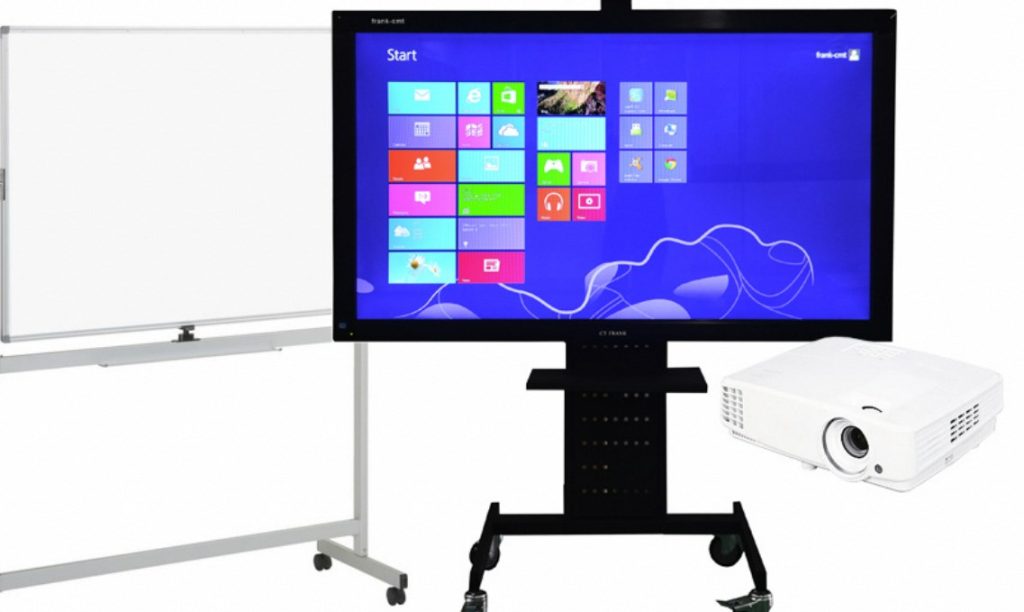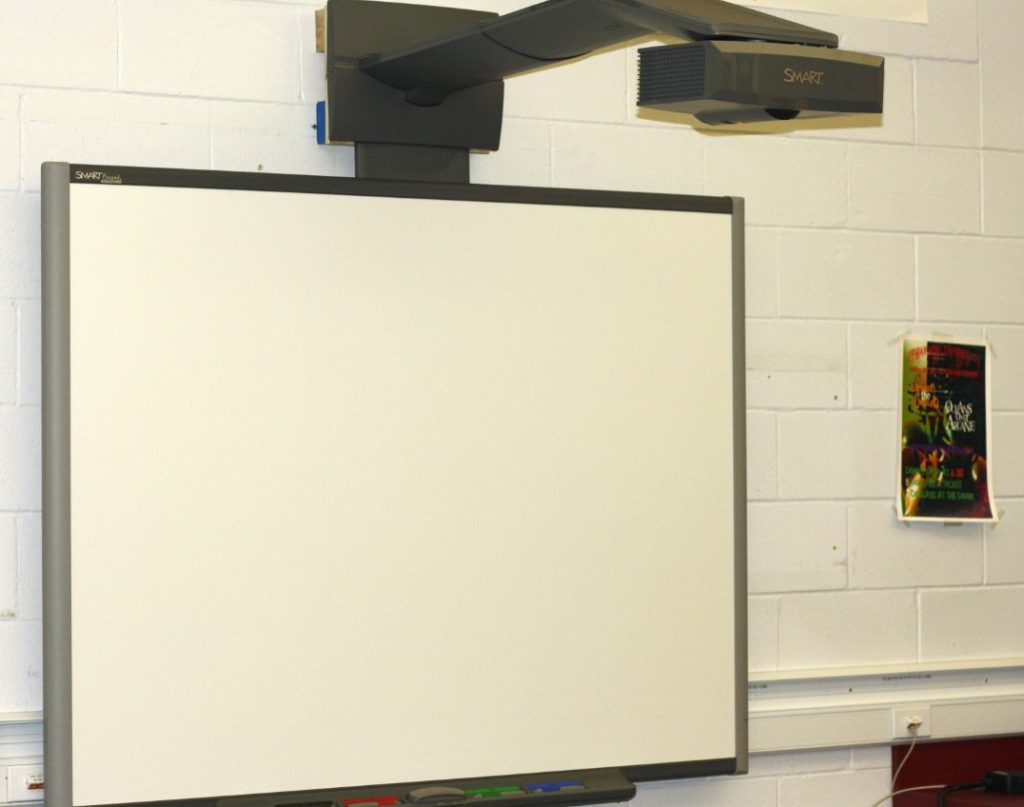The modern classroom is no longer confined to textbooks and lectures. Technology has become an indispensable tool, and smartboards, with their interactive features and dynamic capabilities, stand out as a game-changer in education. This article explores four key ways smartboards empower educators and ignite the academic potential of their students.
Part 1: Engaging All Learners: A Multi-Sensory Experience

Visual Appeal and Enhanced Information Retention:
Smartboards replace static presentations with vibrant visuals, animations, and interactive elements. This multi-sensory approach caters to diverse learning styles. Visual learners benefit from captivating imagery, while auditory learners thrive on multimedia integration. Studies have shown that incorporating multimedia elements can significantly improve information retention compared to traditional text-based lectures.
Interactive Learning and Active Participation:
Smartboards have the power to revolutionize traditional classrooms, turning them from lecture halls into interactive hubs of collaboration and engagement. With the ability to directly manipulate content on the board, students can work together on projects and share ideas in real-time. This hands-on and interactive approach fosters a sense of ownership and active participation among students, keeping them deeply engaged and invested in the learning process. Through this collaborative environment, students are empowered to take charge of their learning, leading to a more profound understanding of the material. By transforming passive listening into active involvement, smartboards create an atmosphere where students are encouraged to contribute, collaborate, and explore, ultimately cultivating a dynamic and enriching educational experience for everyone involved.

Part 2: Collaboration and Critical Thinking: Building a Learning Community
Collaborative Learning Opportunities:
Smartboards are transforming traditional, teacher-centered learning environments into collaborative spaces. Here, students can engage in group projects, brainstorm ideas on the board, and articulate their thought processes to their peers. Encouraging this collaborative approach not only promotes teamwork, but also fosters the development of communication skills and critical thinking. In such an environment, students are learning from each other and building upon one another’s ideas, leading to a deeper understanding of the subject matter. This shift from passive learning to an interactive, collaborative approach supports the development of essential skills that are valuable beyond the classroom. By using the interactive features of smartboards, students empower themselves to actively participate in their learning, leading to a more engaging and enriching educational experience.
Deeper Exploration and Inquiry-Based Learning:
Smartboards enable educators to seamlessly incorporate multimedia resources and simulations into their lessons, enhancing the learning experience. By leveraging virtual field trips, interactive timelines, and scientific simulations, smartboards bring abstract concepts to life. This approach encourages students to delve deeper into topics, facilitating inquiry-based learning and prompting critical questioning. Ultimately, such an approach fosters a curiosity for knowledge and propels students to become active participants in their educational journey. By utilizing smartboards, educators can nurture an environment where students are encouraged to explore, question, and engage with the material in a meaningful manner, ultimately leading to a more profound understanding of the subject matter. This inquiry-based learning approach aims to instill a deep-rooted passion for learning and empower students to take ownership of their educational growth.

Part 3: Personalized Learning and Differentiation
Catering to Individual Needs:
Smartboards have revolutionized the educational landscape, enabling teachers to personalize instruction and cater to individual learning styles. The interactive capabilities of smartboards enable educators to design activities and assignments tailored to students’ needs. Students can display these on the board, allowing them to learn at their own pace and investigate topics that captivate their curiosity. This personalized approach fosters a more inclusive learning environment, as teachers have the ability to offer additional support or enrichment activities through the smartboard software, ensuring that each student has the opportunity to thrive and excel. By leveraging smartboards, teachers can provide a more tailored and dynamic learning experience that accommodates diverse learning styles and abilities. This strategic utilization of technology in the classroom creates an environment where every student can engage with the material in a way that best suits their individual needs, ultimately fostering a more meaningful and impactful educational journey for all.
Real-Time Feedback and Formative Assessment:
The interactive features of smartboards facilitate immediate feedback and personalized support for students. They can engage in quizzes, polls, and other activities that offer immediate data on their comprehension of the material. This enables teachers to pinpoint areas where students may require additional assistance. They can adapt their teaching to address these needs, ensuring that no student falls behind. By leveraging the real-time feedback from smartboard activities, educators can provide targeted support. This ultimately helps students to have a deeper understanding of the content and enhances their overall academic performance.

Part 4: Streamlining Instruction and Maximizing Teacher Effectiveness
Organized and Accessible Resources:
Smartboards revolutionize the traditional classroom setup by eliminating the need for multiple whiteboards, markers, and handouts. Utilizing the smartboard software, educators can effortlessly store and access all lesson materials, assignments, and interactive resources, resulting in a more organized and clutter-free classroom environment. This streamlined approach not only simplifies the learning space but also enhances efficiency in lesson preparation. As a result, teachers save time during lesson planning. This allows them to focus more on creating dynamic and engaging learning experiences. With the administrative tasks made more manageable, educators can invest further energy in developing innovative and effective teaching methods. This ultimately fosters an enriched and stimulating learning environment for their students. By freeing teachers from menial tasks, such as setting up physical materials, smartboards empower them. This allows them to dedicate their efforts to facilitating a more impactful and interactive educational experience.
Data-Driven Instruction and Continuous Improvement:
Smartboards offer a versatile platform for creating interactive assessments that extend beyond conventional pen-and-paper tests. These assessments can be easily administered and provide valuable data on student progress. This data equips teachers with the ability to identify learning gaps. They can track student achievement in real-time and adapt their teaching strategies to optimize student learning. By using the data provided by smartboard assessments, educators empower themselves to tailor their instruction to address specific areas of need. This ensures that no student is left behind and drives continual improvements in their educational practices. Furthermore, the immediate feedback from these assessments enables teachers to provide targeted support, fostering a deeper understanding of the content. This iterative process of assessment and adjustment is fundamental in providing a personalized and effective learning experience, ultimately promoting academic growth and success for all students.

By harnessing the power of smartboard technology, educators can create dynamic and engaging learning environments. These cater to diverse learning styles, promote collaboration and critical thinking, and ensure personalized instruction for every student. Smartboards empower educators, ignite student potential, and pave the way for a more engaging and effective learning experience for all.


